
Ajitsuke tamago, more commonly known as ramen eggs to the ramen eating world, are a savory component popular in most ramen dishes. Luckily, they are very simple to make and contain only five ingredients. In this article we will walk you through how to make ramen eggs step-by-step.
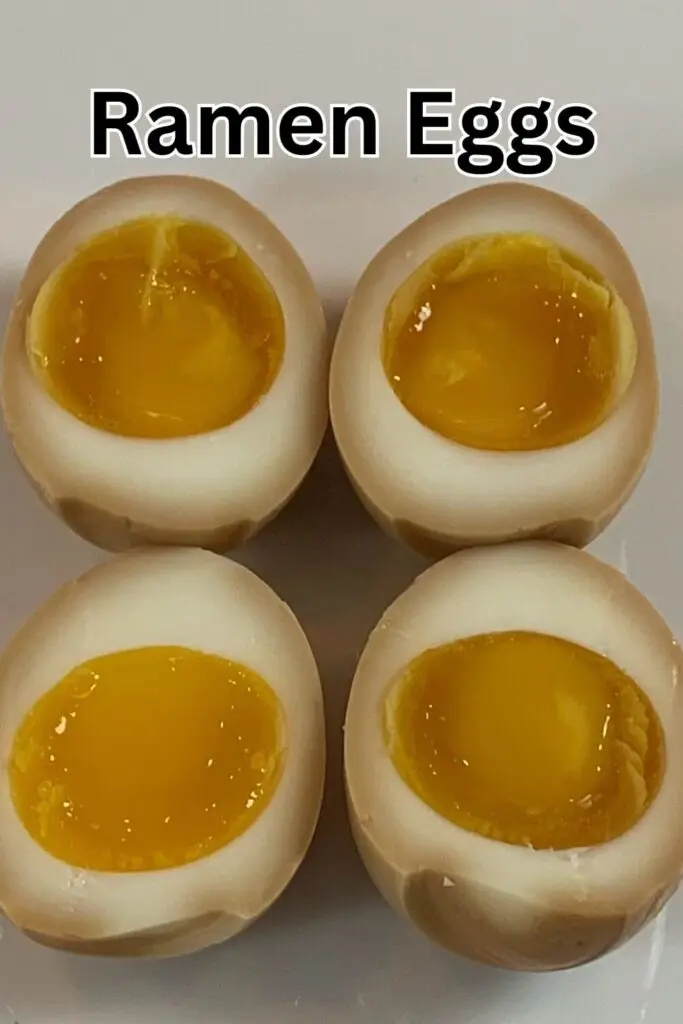
Table of Contents
What are Ramen Eggs?
A ramen egg is a Japanese style soft boiled egg that has been marinated overnight in a marinade of soy sauce, mirin, dashi and sugar. The end result is a savory soft boiled egg with a light brown outside and a soft, sticky yolk and a savory umami flavor.
I have heard ramen eggs also referred to as ajitsuke tamago and soy sauce eggs (shoyu eggs).
When are Ramen Eggs Eaten?

The most common use for ramen eggs is as a topping for ramen dishes. They are most often cut in half and placed in the ramen bowl with the yolk side facing up. In my mind, ramen eggs are an essential part of any ramen dish. I use ramen eggs in all of my ramen recipes.
Ramen eggs can also be eaten as a part of a bento bowl or rice dish. I also enjoy them by themselves as a healthy snack or as part of a breakfast.
How do you Make Ramen Eggs?
Preparing ramen eggs is very simple. The main steps are to prepare the marinade, soft boil the eggs, soak the eggs in marinade overnight, and cut the eggs prior to serving. The marinade ingredients are 1/4 cup of soy sauce, 1/4 cup of dashi, 1/4 cup of mirin, one tablespoon of sugar and 4 medium sized eggs.
Below is a step-by-step walk through of how to make ramen eggs with pictures and a video in the recipe.
Prepare marinade
1. Combine marinade ingredients in a pot and bring to a boil.
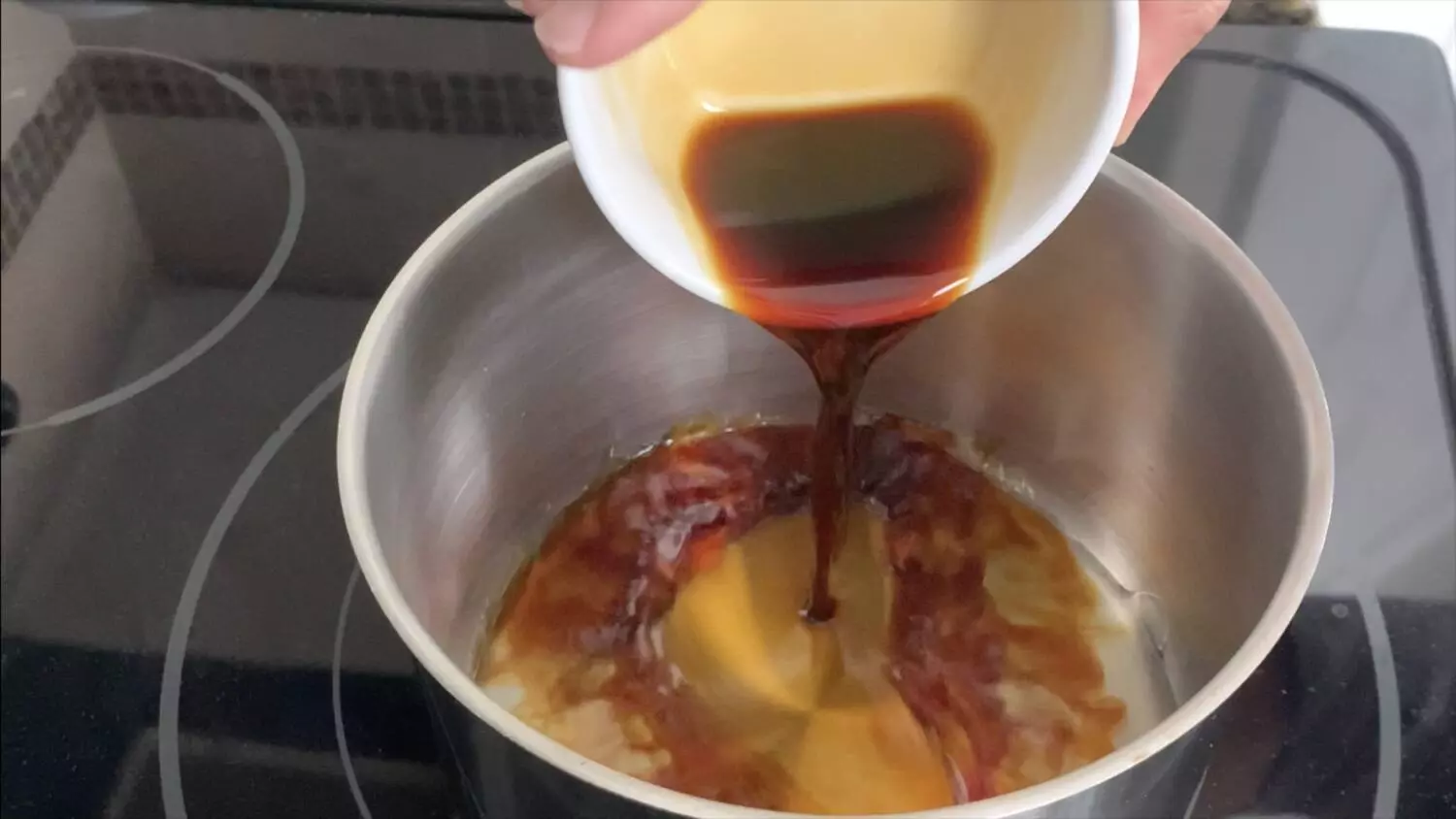
2. Once boiling, reduce heat to low and simmer for three minutes.
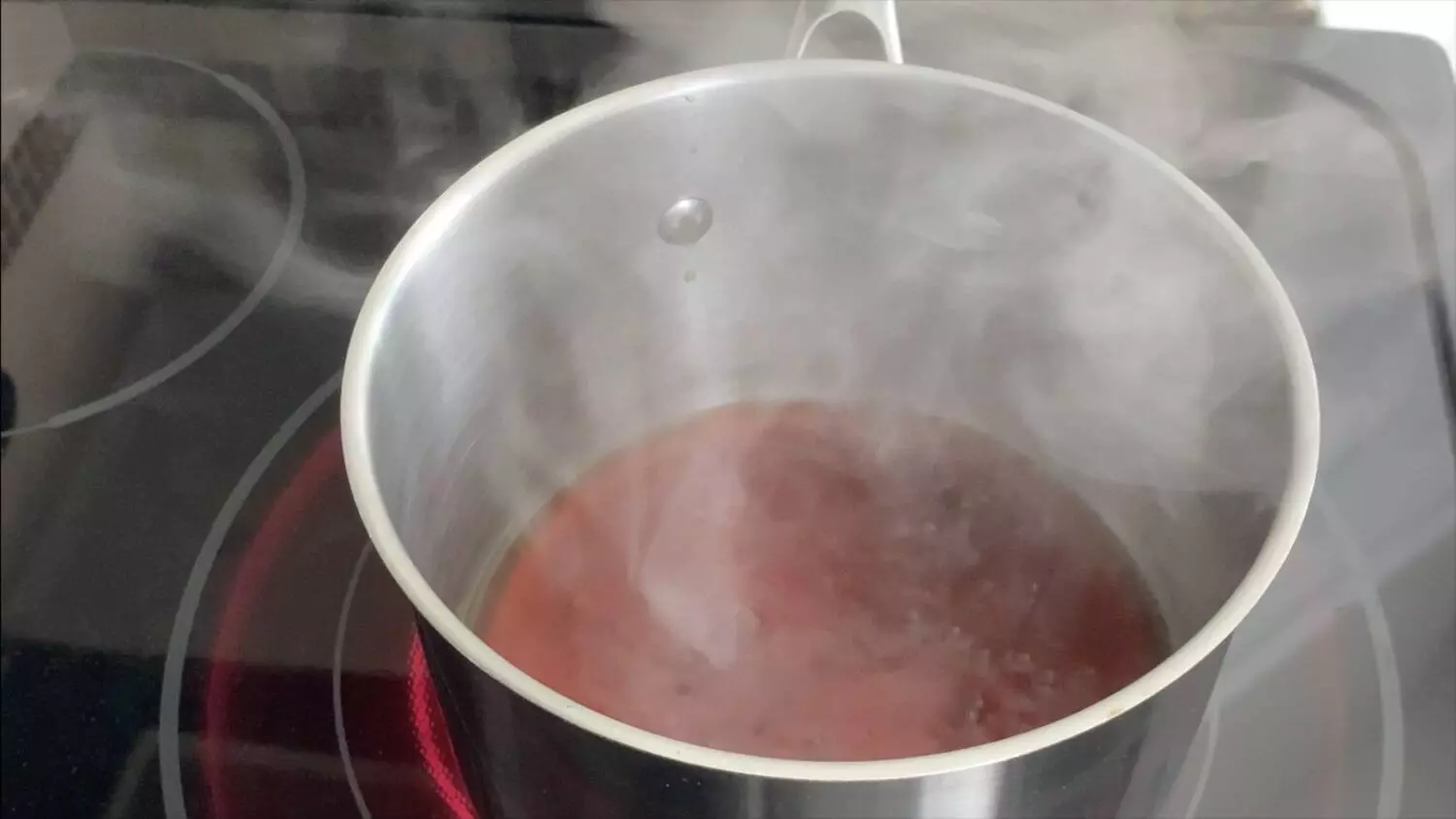
3. After three minutes, remove from heat and let cool.
Prepare soft boiled eggs
1. Bring a pot of water to boil on medium high heat.
2. Once boiling, carefully add cold eggs to water making sure not to crack the shell.
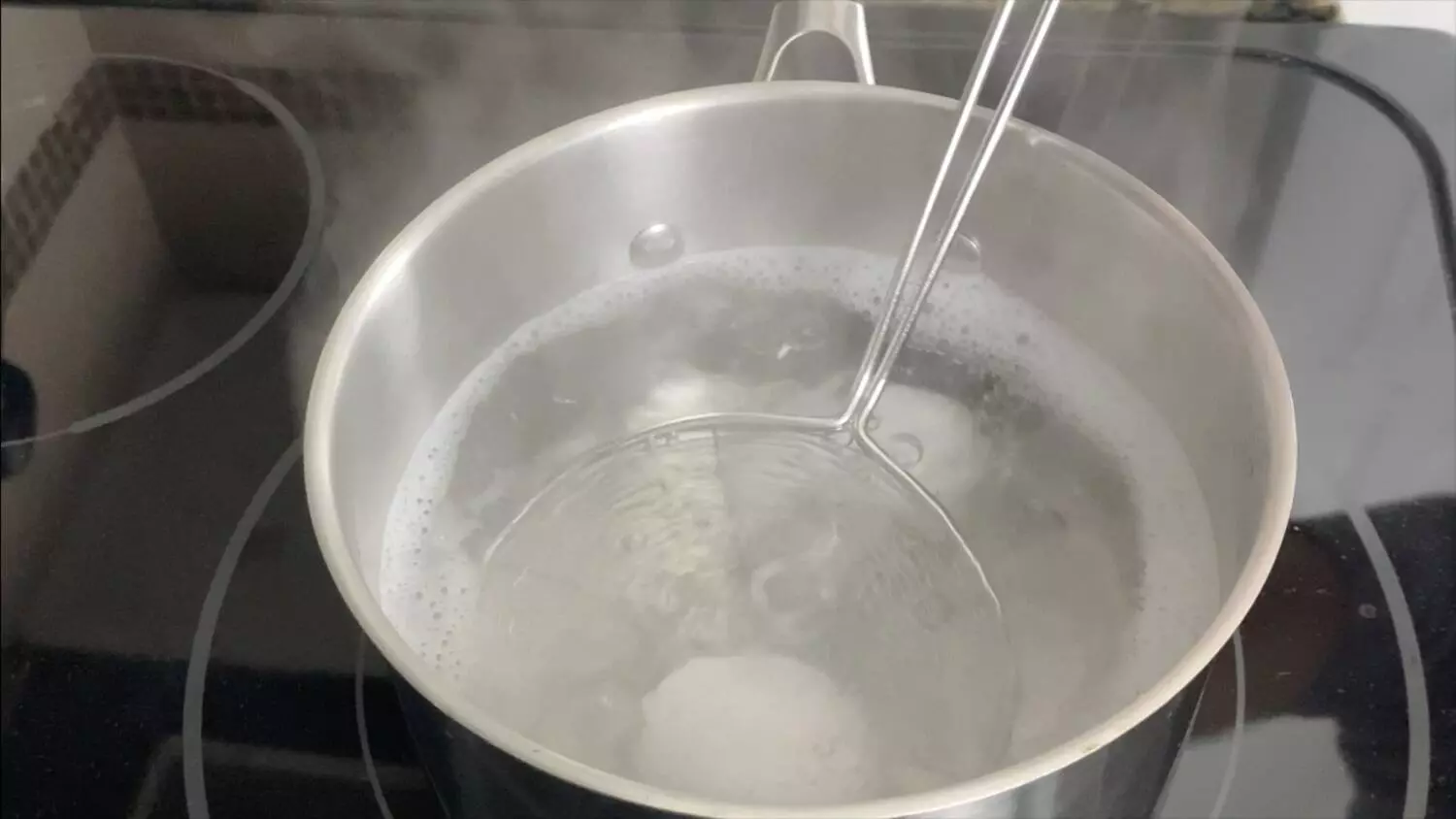
3. Gently stir the eggs for the first minute they are in the water to make sure the yolk stays in the center of the egg.

4. Remove the eggs from the water after cooking for a total of seven minutes. Immediately place the eggs in a bowl of ice water to quickly stop the eggs from cooking. If you prefer your ramen eggs to more of a runny center, you can cook them for six minutes instead of seven. I personally prefer the yolk in my ramen eggs a little thicker.
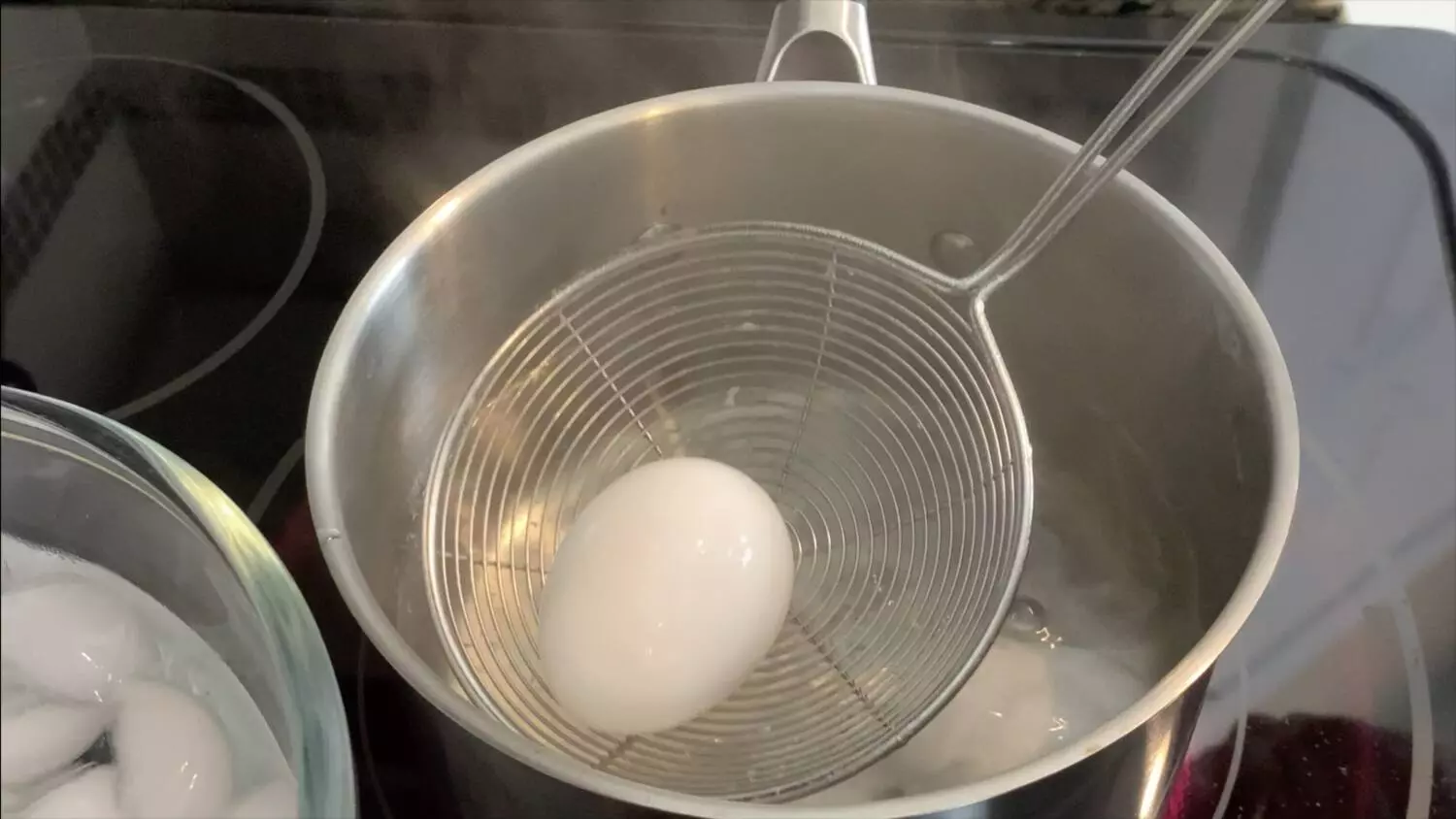
Prepare Ramen eggs (Ajitsuke Tamago)
1. After cooling for around 20 minutes, carefully remove the shells. I like to use a fork to puncture a small hole in the bottom of the egg and use that as my starting point.

2. After the shells are removed from the eggs, add eggs to a small plastic bag. Make sure to use a bag that is just large enough to fit the eggs but not much larger. I like to form the plastic bag around a cup for this part as it makes it easier to add the marinade in the next step.
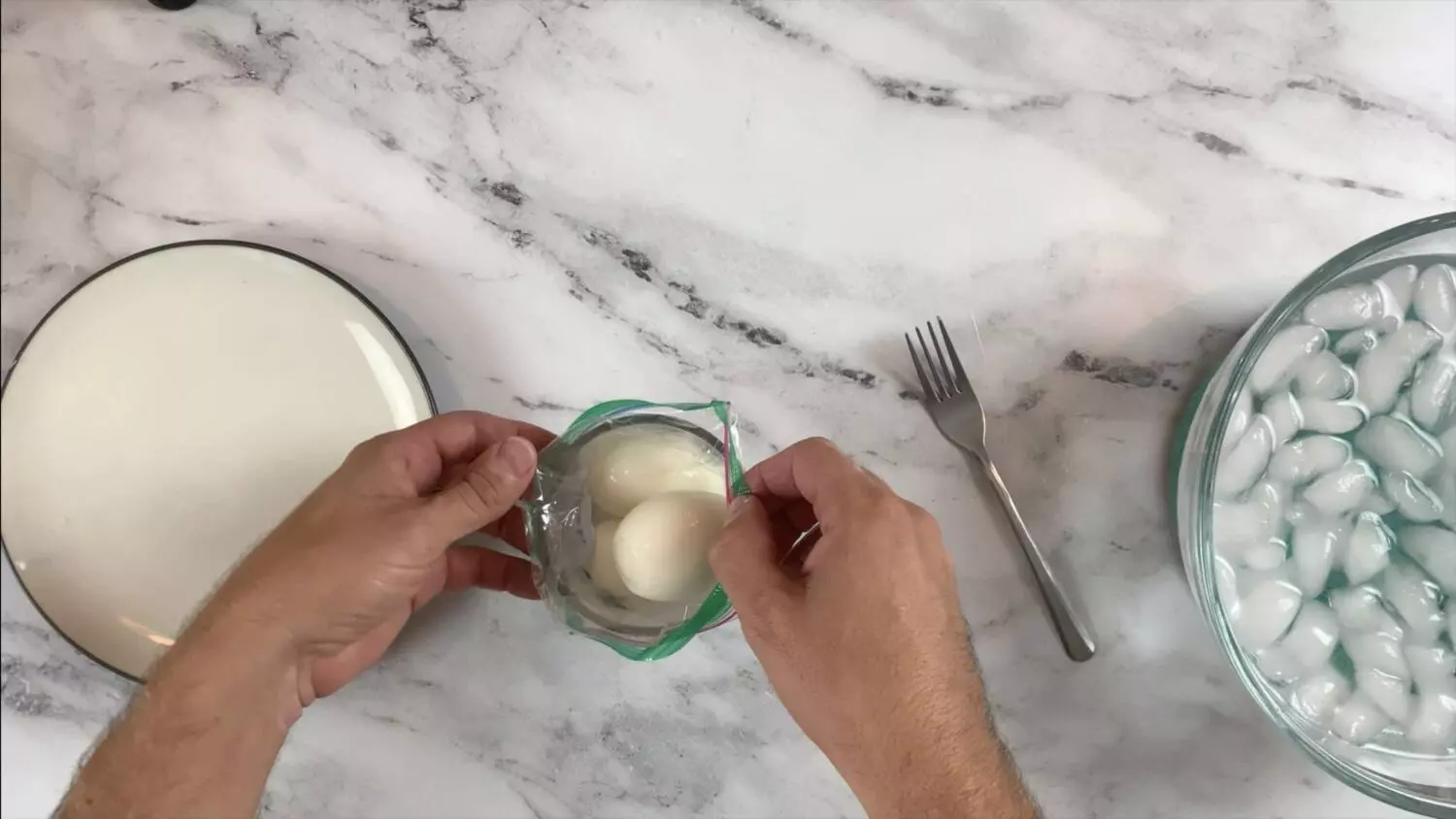
3. Once the eggs are in the plastic bag, add the marinade over the eggs so they are submerged.

4. Press the air out of the plastic bag and seal. Then place in the fridge overnight.

5. The next day, remove the eggs from the marinade, gently dry with a paper towel, gently cut the egg in half the long way and enjoy!

Ramen Eggs Recipe

Ramen Egg (Ajitsuke Tamago)
Equipment
- 1 Pot
- 1 Plastic bag
Ingredients
Marinade
- 1/4 cup Soy sauce
- 1/4 cup Mirin
- 1/4 cup Dashi
- 1 tsp Sugar
Soft Boiled Eggs
- 4 Eggs medium size
Instructions
Prepare marinade
- Combine marinade ingredients in a pot and bring to a boil.
- Once boiling, reduce heat to low and simmer for three minutes
- After three minutes, remove from heat and let cool.
Prepare soft boiled eggs
- Bring a pot of water to boil on medium high heat.
- Once boiling, carefully add cold eggs to water making sure not to crack the shell.
- Gently stir the eggs for the first minute they are in the water to make sure the yolk stays in the center of the egg.
- Remove the eggs from the water after cooking for a total of seven minutes. Immediately place the eggs in a bowl of ice water to quickly stop the eggs from cooking.
Prepare Ramen eggs (Ajitsuke Tamago)
- After cooling for around 20 minutes, carefully remove the shells. I like to use a fork to puncture a small hole in the bottom of the egg and use that as my starting point.
- After the shells are removed from the eggs, add eggs to a small plastic bag. Make sure to use a bag that is just large enough to fit the eggs but not much larger. I like to form the plastic bag around a cup for this part as it makes it easier to add the marinade in the next step.
- Once the eggs are in the plastic bag, add the marinade over the eggs so they are submerged.
- Press the air out of the plastic bag and seal. Then place in the fridge overnight.
- The next day, remove the eggs from the marinade, gently dry with a paper towel, gently cut the egg in half the long way and enjoy!
Video
Nutrition
Frequently Asked Questions
When are ramen eggs eaten?
By far, the most common use for ramen eggs is as a topping in ramen dishes. Typically, the eggs are cut in half and placed in the bowl of ramen with the yolk side facing up. However, ramen eggs can also be served with rice or as a part of a bento bowl.
Are ramen eggs gluten free?
If you order ramen eggs from a restaurant, they will not likely be gluten-free as they are likely to be marinated in soy sauce. However, you can make your own ramen eggs gluten free by using a gluten-free soy sauce in the marinade. All the other ingredients are naturally gluten-free.
Final Thoughts on Ramen Eggs
Ramen eggs are simple to prepare and an essential component to ramen dishes. I use ramen eggs in all of my ramen recipes as it adds a savory component and fun texture to the dish. We hope that you have found this recipe and video helpful. Happy cooking!
Check out the below articles for more great recipes:
Authentic Chashu Pork: Step-by-Step Instructions
Also, for more great videos subscribe to our YouTube Channel.
